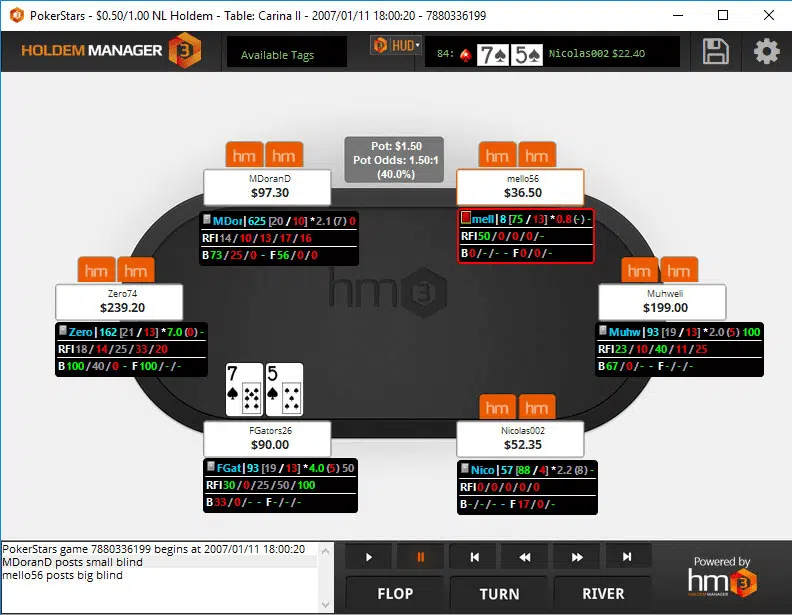The all-time most well-liked card game, poker, has a variation called Pai Gow poker.
It is also known as double-hand poker. The ancient Chinese domino game of Pai Gow served as the inspiration for Pai Gow Poker.

It employs 53 cards, with the extra card being the Joker.
Pai Gow poker is not as old as the other poker variants.
In actuality, this type of poker first appeared in casinos in 1985. It has managed to move up quite a bit on the list of the most popular poker varieties in the time it has been there.
Pai Gow has the potential for players to make a reasonable return with a house edge of around 2.5% – 2.84%.
Therefore, it is a fun poker game to play once you understand all the rules.
Rules of the game
Most rules resemble the traditional poker game. However, there are a few significant minor variations.
So, we will explain all the rules that are employed here.
- Pai Gow poker employs a conventional 52-card deck plus a joker.
- The Joker is entirely wild and, as such, can help any combination.
- One of the players at the table, the dealer, or a player-dealer “team” can serve as the banker. Therefore, being able to defeat the banker is the game’s straightforward goal.
- For this purpose, the rule is to use the seven cards to create two poker hands. The player is dealt seven cards divided into five and two-card hands, respectively (also known as the backhand/big hand and the front hand/small hand).
- The rules now state that your high hand must be better than your low hand. For instance, if you have a pair of fives in your low hand, your high hand must be better than it.
Play Pai Gow at:
-
William Hill9.5€ 300+ 50 free spins700+ gamesPayout: 1-2 daysBest feature: Real poker!18+ | Bonus & free spins wager req: 25x | Gamblingtherapy.org | Play responsibly | Terms and Conditions Apply
-
Leovegas9.72000 NZD+ 200 free spins on MGM Grand Gamble2380+ gamesPayout: Max 24hBest feature: Unique jackpots18+ | Dep wager req: 20x | Payout speed: max 24 hours | Gamblingtherapy.org | Play responsibly | Terms and Conditions Apply
-
Guts9.2NZ$ 500+ Game of Guts reward2500 gamesPoker against real playersMany promotions18+ | Wager req: 35x | Live bonusbonus wager req: 40x | Gamblingtherapy.org | Play responsibly | Terms and Conditions Apply
How to play step by step
There are three portions of playing Pai Gow poker.
Let’s discuss these portions so that you can understand them easily.
Dealing the game
An intriguing deal structure exists in Pai Gow Poker.
Pai Gow poker deal cards Depending on the number of players on the table, the dealer divides the deck of cards into seven face-down piles, each consisting of seven cards.
These decks include one for the dealer, one for each player, and four additional cards available in the discard pile or muck.
To start with, the dealer throws three dice before dividing the deck and dealing the cards.
Pai Gow poker losing hand Then, the dealer will declare the sum of these three dice. Here, the hands’ positions line up with the number on the dice.
Position 1 will always be taken by the banker or dealer.
The dealer will then assign a specific number to each location after counting the places up to the total of the dice, starting from the right side and moving to the left.
The person on whom the dealer ends receives the first hand dealt. Then the successive cards are dealt in a counterclockwise direction.
Setting your Pai Gow hand
Players are in charge of setting their own hands and should take caution when doing so.
The five-card hand must, in general, always have a higher poker rank than the two-card hand.
After setting all of the player hands, the dealer will now disclose and set the House Hand.
In descending order of value from left to right, the House Hand will be positioned parallel to the Bankroll Rack.
When arranging the House Hand, the process must always adhere to the “House Way.”
Pai Gow Showdown
Now comes the showdown. The two-card hand goes in front, followed by the five-card hand after players have placed their hands.
As a result, the two-card hand is sometimes referred to as “on top,” and the five-card hand is frequently referred to as the “bottom.”
Hand ranking
Most poker variants, including Texas hold’em, use the same hand rankings as Pai Gow Poker.
However, the Joker in the deck is one significant way Pai Gow differs from other poker variations.
Here are the rankings of every hand in Pai Gow Poker.
Hand Explanation Five Aces 5 Aces + the Joker. Royal Flush Five identical suit cards, numbered aces through ten. Straight Flush Five cards in the same suit that rank sequentially. Four of a Kind Four cards of the same rank. Full House Two additional identical-rank cards and three cards of the same rank. Flush Any five cards of the same suit. Straight Any five cards ranked consecutively. Three of a Kind A set of three cards from the same rank. Two pairs Two cards of the same rank, plus two additional cards of the same rank. One Pair A pair of cards with the same rank. High Card Five unmatched cards. Win
The dealer will display your hands together with the banker’s hands after you’ve already set them.
Then, there are three possible winning scenarios in Pai Gow Poker:
- Player wins: The dealer awards the stake to the player who beats both hands.
- Dealer wins: The dealer receives a stake if they win both hands.
- Tie: There is no money exchange if the dealer wins one hand and a player another. This is known as a “Push”.
Latest poker news
FAQ
Is Pai Gow profitable?
Poker typically ranks first on the list of most profitable casino games compared to all other games.
Despite not being at the top of the list, Pai Gow is frequently considered among the top ten.
However, your competitive edge will be based on your level of expertise.
What skills do I require to play Pai Gow?
It would be advantageous for you to have prior poker experience before playing Pai Gow.
You should also be familiar with and comprehend hand rankings.
Are the rules for Pai Gow consistent every time?
No. The rules for every poker game are subject to change.
The regulations may also change depending on the casino.
The same is the case with Pai Gow poker.
3
-
2 -







